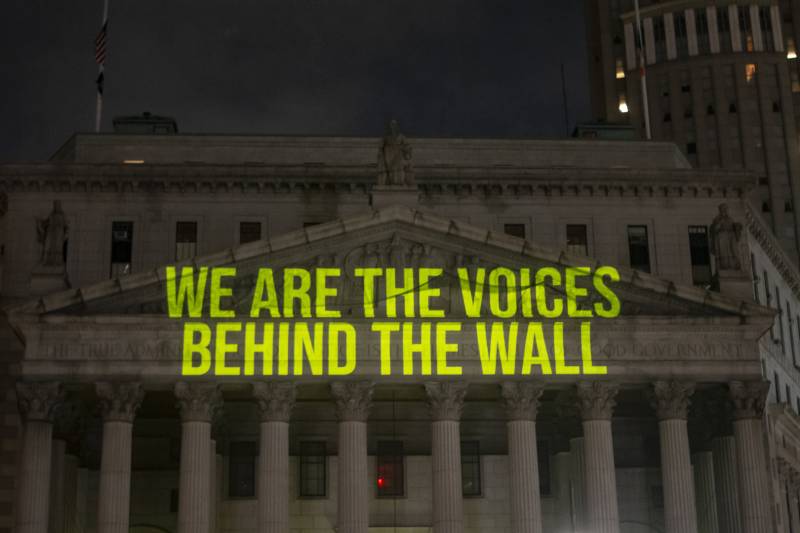With millions of people behind bars in the U.S., artist Hank Willis Thomas thinks about all of the ideas that are locked away with them. “Look at all the wisdom, look at all the heart that is imprisoned in our society,” he says.
He and professor Baz Dreisinger are the co-founders of The Writing on the Wall, a project that takes the words of incarcerated people beyond prison and jail walls. “There was so much poetry in there, just so much beauty, drawings, thoughts, so much reflection of humanity,” says Dreisinger.
Dreisinger also founded the Incarceration Nations Network, a coalition of prison reformers, and she teaches English at John Jay College of Criminal Justice. “Technically I was teaching English classes, but really I was teaching criminal justice through the lens of the humanities—and that to me is what The Writing on the Wall is,” she says.
The project began small and grew to institutional proportions through projections of those words on the sides of buildings in the U.S. and Mexico.
Initially, Dreisinger and Thomas enlisted architects to design a mobile installation booth that resembled a prison cell with the words of the incarcerated on the walls, floor and ceiling. The idea was to take the booth to cities around the U.S. and Canada, but after its New York debut, the pandemic hit.

9(MDAxOTAwOTE4MDEyMTkxMDAzNjczZDljZA004))

